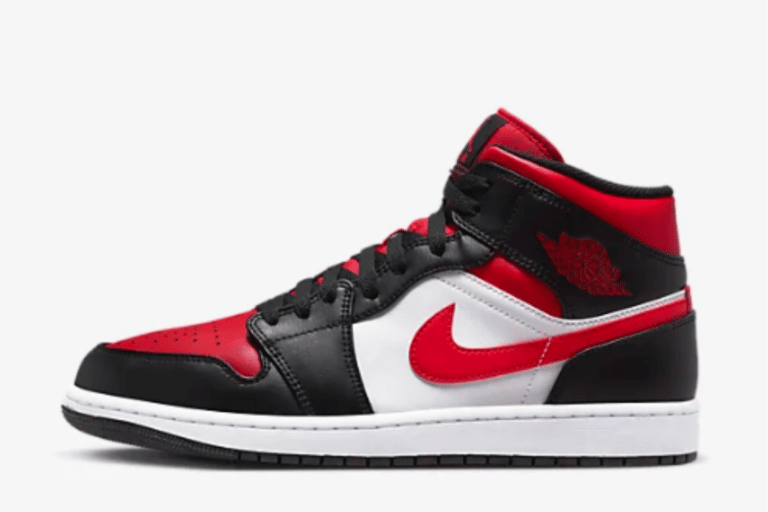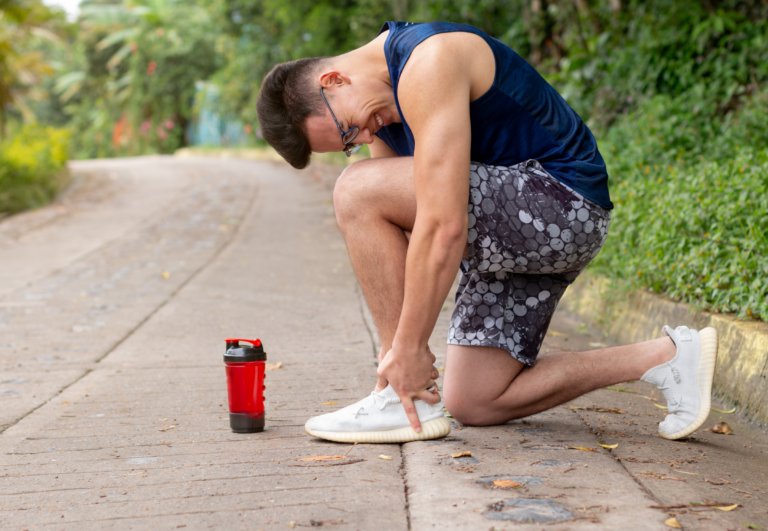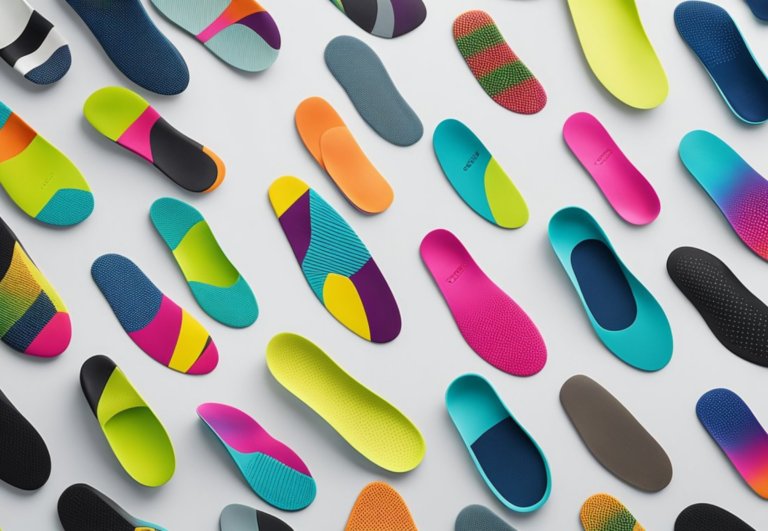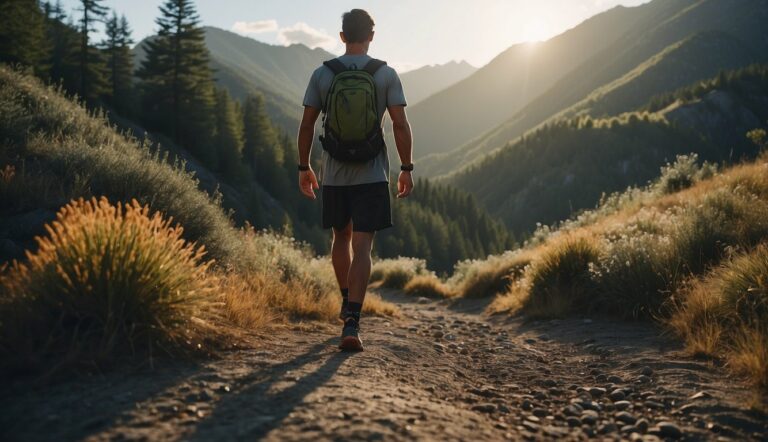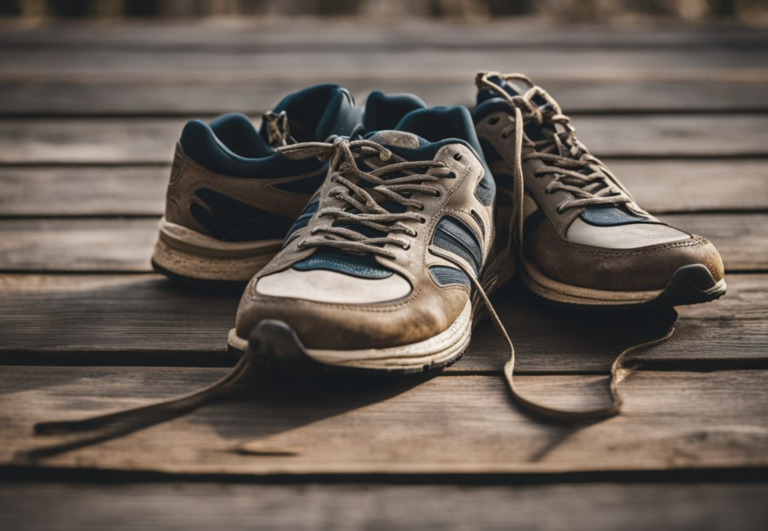Responsive vs Plush Running Shoes – Key Differences, Pros, and Cons
When comparing responsive vs plush running shoes, the key distinction lies in their cushioning and intended use. It’s important to pay attention to the amount of cushioning as it influences pronation and overall foot health.
Responsive running shoes are designed for energy return, offering a firm cushioning with materials like EVA or PU in the midsole to facilitate a quicker foot turnover. They’re lightweight, performance-oriented, and best suited for speed work and shorter distances. Responsive shoes, by offering a snug fit around your forefoot and toes, also help to prevent toe injuries by maintaining stability.
On the other hand, plush running shoes provide a soft, pillowy feel underfoot with a thicker foam midsole, prioritizing comfort and impact protection, making them ideal for long distances and high mileage. Plush shoes offer a wider and more comfortable space for your toes, providing extra care for your foot’s muscles.
While responsive shoes promote a feeling of propulsion and are often lighter, plush shoes offer superior comfort and a luxurious underfoot feel but may have less ground feel and require an adjustment period. The plush shoes, with their raised arch, offer better shock absorption which helps prevent foot and leg injuries.
Your choice between the two should consider your running style, footstrike, and the type of running you do most. Whether you need strong arch support or to correct over-pronation, both shoes can cater to these needs.
Responsive vs Plush Running Shoes – Overview
When selecting your running shoes, understanding the difference between responsive and plush cushioning is key to tailoring your running experience, preventing injuries, and ensuring your feet and leg muscles are adequately supported.
Responsive running shoes focus on giving you a feeling of energy return. This means each time your foot strikes the ground, the shoe helps propel you forward. They typically feature materials within the midsole, like EVA (ethylene vinyl acetate) or PU (polyurethane), which are engineered to be more firm, aiding in quicker foot turnover.
Plush cushioning, on the other hand, is all about providing a soft, pillowy feel underfoot. These shoes often incorporate foam midsoles that offer a higher level of cushioning. The design aims to maximize comfort, especially during long runs, and is ideal for runners seeking maximal impact protection.
A greater thickness of the cushioned midsole can also increase the shoe drop, which is the height difference between the heel and toe of the shoe, supporting the arch of the foot.

Here’s a simple comparison:
| Feature | Responsive | Plush |
|---|---|---|
| Cushioning | Firm for energy return | Soft for comfort |
| Midsole | EVA, PU for quick response | Thicker foam like DNA LOFT v3 |
| Best Suited | Speed work, shorter distances | Long distances, high mileage |
Remember, your footstrike – how your foot lands with each step – also plays a role in determining the best shoe for you, impacting the pronation and forefoot health.
Whether you need responsive support to stay quick on your feet, or plush cushioning for those extra miles, there’s a shoe that’s the right fit for your running style.
Responsive Running Shoes

Responsive running shoes are designed to give you a feeling of propulsion, improving your energy return with each step. They’re typically lighter and built for performance, favoring a firmer ride that allows you to push off the ground more effectively.
Pros
- Lightweight: You’ll enjoy swifter feet movement due to the reduced weight.
- Performance-Oriented: These shoes often help you run faster and improve your times.
Cons
- Less Cushioning: There may be less underfoot comfort, which can lead to fatigue in longer races.
- Durability: The lightweight materials might not be as durable as those found in plush running shoes.
Design and Performance
Responsive shoes boast features like FlyteFoam, PWRrun+, and ZoomX technologies that provide a springy feel.
Companies like Nike and New Balance integrate designs that cater to marathon racing, with shoes like the Nike Zoom series leading the pack. Asics running shoes with Gel cushioning offer a balance between firmness and comfort.
Top Brands and Models
- Nike: The Nike Zoom series is renowned for its race-ready responsiveness.
- Adidas: Known for sleek designs using Boost and Adiprene foams for a responsive stride.
- Asics: The Asics Gel-Kayano is a favorite that combines support with a responsive platform.
- New Balance: Opt for models with their signature FlyteFoam for a responsive ride.
Responsive running shoes are suited for runners seeking an energetic feel from their footwear, often favoring a balance between lightweight design and rebound efficiency.
They’re an ideal choice if your priority is to enhance performance and pace over long distances.
Plush Running Shoes
When you’re in the market for running shoes that offer great comfort and softness, plush running shoes might just be your perfect fit. These shoes are specially designed with maximum cushioning to support long-distance runs and deliver a luxurious underfoot feel.
Pros
- Superior Comfort: You’ll benefit from a soft, supportive stride that reduces impact on your joints during runs.
- High Mileage Friendly: These shoes are typically durable and built to withstand the demands of extensive running sessions.
Cons
- Less Ground Feel: With the extra cushioning, you might experience less sensory feedback from the ground.
- Potential Adjustments: Sometimes, switching to plush cushioning requires a short adjustment period for your body to adapt.
Comfort Features
| Feature | Description |
|---|---|
| Thick Midsole | Provides ample cushioning for impact absorption |
| Padded Collar | Enhances comfort around the ankle |
| Premium Materials | Contributes to the overall plushness and luxury feel |
| Cushioned Insoles | These add an extra layer of comfort inside the shoe |
| Wide Toe Box | Allows for natural foot expansion during long runs |
Highly Cushioned Running Shoe Models
- HOKA Bondi 8: Known for its maximum-level cushioning, making it a favorite among distance runners.
- Saucony Triumph: Features plush cushioning for smooth transitions and superior comfort.
- New Balance Fresh Foam X: Offers a soft ride combined with supportive cushioning.
- HOKA Clifton: Balances comfort and lightweight design for a plush experience.
- Brooks Glycerin 20: Ensures luxurious comfort with its soft cushioning, ideal for daily training.
- ASICS GEL-Nimbus 25: Provides gel-based cushioning for a comfortable run.

How To Choose Between Responsive and Plush Running Shoes
Choosing the right type of running shoe depends on your individual needs and running style; whether you need additional arch support, shock absorption or prefer a snug fit around your toes.
| Use Case | Shoe Type | Cushioning | Best For |
|---|---|---|---|
| Long Distance, Daily Wear | Plush | Maximal cushioning | Comfort, endurance running |
| Speedwork, Racing | Responsive | Minimal cushioning | Performance, fit |
| Recovery Runs | Either | Depends on comfort | Reducing impact forces |
By Use Case
When considering the perfect running shoe, remember that successful landing with each stride and comfort go hand in hand.
You’ll want to factor in if you need a shoe that provides more feedback from the ground for quick performance, basically an outsole that gives you a feel of the surface beneath, or if you seek maximum comfort and flexibility for long mileage.
- Neutral or Stability: Consider whether you need a neutral shoe, which allows your foot to move more naturally, or a stability shoe, which provides additional support for overpronation.
- Shoe Drop: This refers to the difference in height between the heel and the toe of the shoe. A lower drop can encourage a more natural foot strike, which is something many neutral profile runners enjoy, while a higher drop may be preferred by heel strikers.
- Mileage and Use: If you’re logging high mileage or need a shoe for daily trainers and recovery runs, plush cushioning can minimize impact forces on your joints. Conversely, if you’re focused on performance and quick, short runs, a responsive shoe might be your pick.
- Performance: Responsive shoes are designed to provide feedback from the ground and can offer an energy return that favors quicker paces, whereas plush running shoes absorb more shock, delivering comfort but potentially less ground feel.
- Daily Trainer vs. Recovery Runs: For your everyday runs, a balanced shoe that offers both cushioning and responsiveness could suit your needs. On days you need extra care, like after a high-intensity session, plush running shoes or even walking shoes might be the better choice.
Weight Considerations
When selecting between responsive and plush running shoes, the weight of the shoe can be just as crucial as the weight of the runner.
Heavier runners may benefit from the additional cushioning provided by plush shoes to absorb the increased impact of each foot strike. This extra cushioning can help distribute the force more evenly, potentially reducing the risk of injury and providing greater comfort over longer distances.
On the flip side, lighter runners might find that responsive shoes better suit their needs. Since they exert less force on the ground, a lighter and firmer shoe can offer enough protection while also providing a more direct feel for the ground, which can be beneficial for maintaining speed and agility.
Quick Tips:
- Studies suggest that every 100 grams of added weight in shoes can slow a runner down by 1%. This is critical for performance-oriented runners for whom every second counts.
- A plush shoe can weigh between 20-30% more than a responsive shoe, which is a significant difference for runners who prioritize speed and a lightweight feel.
Terrain Adaptability
The terrain on which you run can greatly influence the type of running shoe that will best suit your needs. Responsive running shoes, with their firmer and often more streamlined design, tend to provide better feedback from the ground, making them a good choice for runners who frequent well-maintained trails or tracks where the need for impact absorption is lower.
Plush running shoes, with their thicker and softer midsoles, are typically better suited for runners who spend a lot of time on hard surfaces like concrete or asphalt. The additional cushioning helps to protect the joints from the relentless pounding on these unforgiving surfaces.
Quick Tips:
- Responsive shoes often feature less tread and a smoother sole, which is ideal for even surfaces where grip is less of a concern.
- Plush shoes often have a more pronounced tread pattern or use more durable rubber compounds to offer better traction and durability on rougher terrain.
- Some plush models may feature a rock plate, which adds protection against
Durability and Maintenance
Responsive running shoes often prioritize performance over durability, with lighter materials that may wear down faster under constant use. The lifespan of these shoes typically ranges from 300 to 500 miles, depending on running style and terrain. To extend the life of responsive shoes, it’s important to use them primarily for their intended purpose—speed work and racing—rather than daily training.
Plush running shoes are generally built with durability in mind, designed to absorb the high impact of long-distance running. They often feature more robust outsoles and thicker midsoles that can last upwards of 400 to 600 miles. However, the softer cushioning can compress over time, and it’s crucial to monitor the shoe’s feel and support level regularly.
Pricing and Value
The cost of running shoes varies widely, with responsive and plush models available across a range of price points.
Responsive running shoes, due to their specialized design for speed and performance, can often come with a higher price tag, especially those incorporating the latest technologies or materials. Prices for top-tier responsive models can range from $120 to $250.
Plush running shoes, while also available at premium prices, tend to offer more options in the mid-range market. These models can range from $100 to $180, providing a balance of comfort and durability that can be more cost-effective over time, especially for runners who log high mileage.
A study by Runner’s World indicated that moderately priced shoes often outperform their more expensive counterparts in both comfort and longevity tests.

